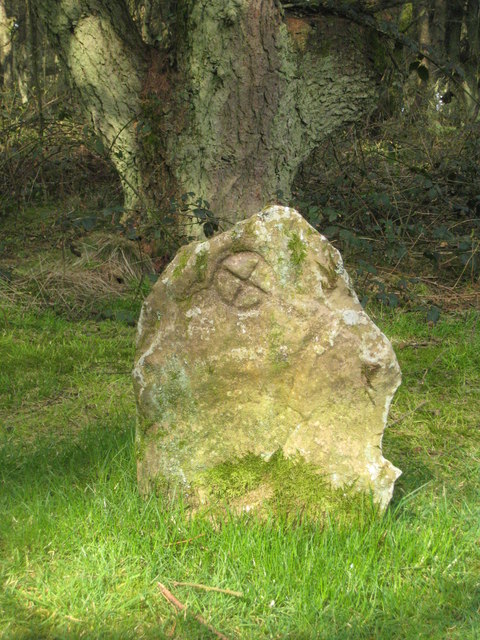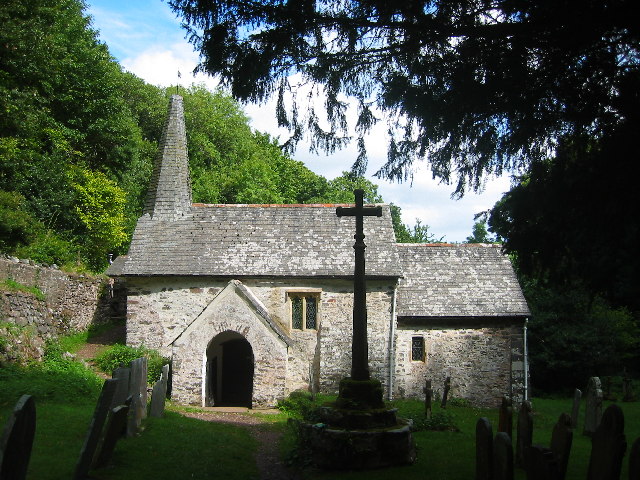Culbone on:
[Wikipedia]
[Google]
[Amazon]
Culbone (also called Kitnor) is a
 Culbone was listed in the
Culbone was listed in the
hamlet
''The Tragedy of Hamlet, Prince of Denmark'', often shortened to ''Hamlet'' (), is a tragedy written by William Shakespeare sometime between 1599 and 1601. It is Shakespeare's longest play, with 29,551 words. Set in Denmark, the play depicts ...
consisting of little more than the parish church
A parish church (or parochial church) in Christianity is the church which acts as the religious centre of a parish. In many parts of the world, especially in rural areas, the parish church may play a significant role in community activities, ...
and a few houses, in the parish of Oare in the Exmoor National Park
Exmoor is loosely defined as an area of hilly open moorland in west Somerset and north Devon in South West England. It is named after the River Exe, the source of which is situated in the centre of the area, two miles north-west of Simonsbath. ...
, Somerset
( en, All The People of Somerset)
, locator_map =
, coordinates =
, region = South West England
, established_date = Ancient
, established_by =
, preceded_by =
, origin =
, lord_lieutenant_office =Lord Lieutenant of Somerset
, lord_ ...
, England. As there is no road access it is a two-mile walk from Porlock Weir
Porlock Weir is a harbour settlement approximately west of the inland village of Porlock, Somerset, England. "Porlock" comes from the Old English ''port'' '' loca'', meaning an enclosure near a harbour. Porlock Weir refers to the salmon stakes ...
, and some four miles from Porlock
Porlock is a coastal village in Somerset, England, west of Minehead. At the 2011 census, the village had a population of 1,440.
In 2017, Porlock had the highest percentage of elderly population in Britain, with over 40% being of pensionable ag ...
itself.
The village is situated in a sheltered spot, near the coast of Porlock Bay. The slopes behind the village rise to the height of , over which a small stream falls down to the sea.
The South West Coast Path goes through the village, parts of which were closed and diverted in February 2007 following landslips in the woods. The woods around the village are home to the rare '' Sorbus vexans'', a microspecies of self-cloning Sorbus
''Sorbus'' is a genus of over 100 species of trees and shrubs in the rose family, Rosaceae. Species of ''Sorbus'' (''s.l.'') are commonly known as whitebeam, rowan ( mountain-ash) and service tree. The exact number of species is disputed depe ...
trees which are only found in the coastal area between Culbone and Trentishoe
220px, The Trentishoe area on Donn's one inch to the mile survey of 1765.
Trentishoe is a village and civil parish in North Devon, England. The parish lies on the coast of the Bristol Channel. The village is east of Combe Martin, at an eleva ...
in Devon
Devon ( , historically known as Devonshire , ) is a ceremonial and non-metropolitan county in South West England. The most populous settlement in Devon is the city of Plymouth, followed by Devon's county town, the city of Exeter. Devo ...
. It is amongst the rarest trees in Britain. Other Whitebeam
The whitebeams are members of the family Rosaceae, comprising subgenus ''Aria'' (or, according to some authorities, its own genus) of genus ''Sorbus'', and hybrids involving species of this subgenus and members of subgenera ''Sorbus'', ''Torminar ...
and Rowan species found in the area include; ''Sorbus subcuneata'', ''Sorbus ‘Taxon D’'' and ''Sorbus aucuparia''.
History
 Culbone was listed in the
Culbone was listed in the Domesday book
Domesday Book () – the Middle English spelling of "Doomsday Book" – is a manuscript record of the "Great Survey" of much of England and parts of Wales completed in 1086 by order of King William I, known as William the Conqueror. The manus ...
as Kytenore, or Chetnore. The name "Culbone" is thought to derive from the Celtic ''cil beun for "Church of St Beuno".
The Culbone Stone, an early mediaeval standing stone approximately one metre in height. It lies in woodland close to the parish boundary, and features an incised wheeled cross, the style of which suggests it dates from 7th to 9th century. The stone is legally protected as a scheduled ancient monument
In the United Kingdom, a scheduled monument is a nationally important archaeological site or historic building, given protection against unauthorised change.
The various pieces of legislation that legally protect heritage assets from damage and d ...
. It has been suggested that the stone has been moved from its original site as part of the Culbone Hill Stone Row.
In the 14th century Culbone's steep woods were used as a colony for French prisoners, and again in 1720 as a prison colony.Jenkins, S. (2000), ''England's Thousand Best Churches'', Penguin Books
Penguin Books is a British publishing house. It was co-founded in 1935 by Allen Lane with his brothers Richard and John, as a line of the publishers The Bodley Head, only becoming a separate company the following year.charcoal burning industry, the original burners for which were reputed to be a colony of
 Culbone Church is said to be the smallest parish church in England. The
Culbone Church is said to be the smallest parish church in England. The
lepers
Leprosy, also known as Hansen's disease (HD), is a long-term infection by the bacteria ''Mycobacterium leprae'' or ''Mycobacterium lepromatosis''. Infection can lead to damage of the nerves, respiratory tract, skin, and eyes. This nerve dama ...
. Although the lepers were not allowed into the village, there is a small leper window in the north wall of the church.
Culbone was a civil parish
In England, a civil parish is a type of administrative parish used for local government. It is a territorial designation which is the lowest tier of local government below districts and counties, or their combined form, the unitary authorit ...
until 1933 when, because of the small population (43 in 1931) it was merged into the parish of Oare.
Culbone Cottage, Culbone Lodge, and the Parsonage Farmhouse are all Grade II listed buildings
In the United Kingdom, a listed building or listed structure is one that has been placed on one of the four statutory lists maintained by Historic England in England, Historic Environment Scotland in Scotland, in Wales, and the Northern Irel ...
.
Church
 Culbone Church is said to be the smallest parish church in England. The
Culbone Church is said to be the smallest parish church in England. The chancel
In church architecture, the chancel is the space around the altar, including the choir and the sanctuary (sometimes called the presbytery), at the liturgical east end of a traditional Christian church building. It may terminate in an apse.
Ov ...
is × , the nave
The nave () is the central part of a church, stretching from the (normally western) main entrance or rear wall, to the transepts, or in a church without transepts, to the chancel. When a church contains side aisles, as in a basilica-type ...
× and the building has a total length of . It seats about 30 and is dedicated to St Beuno. Services are still held there, despite the lack of road access. The church is probably pre-Norman in origin, with a 13th-century porch, and late 15th-century nave
The nave () is the central part of a church, stretching from the (normally western) main entrance or rear wall, to the transepts, or in a church without transepts, to the chancel. When a church contains side aisles, as in a basilica-type ...
. It was refenestrated and reroofed around 1810 and the spirelet added in 1888. It underwent further restoration in 1928. It has been designated by English Heritage
English Heritage (officially the English Heritage Trust) is a charity that manages over 400 historic monuments, buildings and places. These include prehistoric sites, medieval castles, Roman forts and country houses.
The charity states that i ...
as a Grade I listed building
In the United Kingdom, a listed building or listed structure is one that has been placed on one of the four statutory lists maintained by Historic England in England, Historic Environment Scotland in Scotland, in Wales, and the Northern Irel ...
.
Samuel Taylor Coleridge
ThePerson from Porlock
The person from Porlock was an unwelcome visitor to Samuel Taylor Coleridge during his composition of the poem ''Kubla Khan'' in 1797. Coleridge claimed to have perceived the entire course of the poem in a dream (possibly an opium-induced haze), ...
is believed to have disturbed Samuel Taylor Coleridge
Samuel Taylor Coleridge (; 21 October 177225 July 1834) was an English poet, literary critic, philosopher, and theologian who, with his friend William Wordsworth, was a founder of the Romantic Movement in England and a member of the Lake ...
during his composition of the oriental poem ''Kubla Khan
''Kubla Khan'' () is a poem written by Samuel Taylor Coleridge, completed in 1797 and published in 1816. It is sometimes given the subtitles "A Vision in a Dream" and "A Fragment." According to Coleridge's preface to ''Kubla Khan'', the poem ...
''. Coleridge was living at Coleridge Cottage, Nether Stowey
Nether Stowey is a large village in the Sedgemoor district of Somerset, South West England. It sits in the foothills of the Quantock Hills (England's first Area of Outstanding Natural Beauty), just below Over Stowey. The parish of Nether Stowey ...
(between Bridgwater and Minehead). Coleridge later stated he wrote the poem at Brimstone Farm, though no such farm has ever existed. It is likely that this encounter took place while he was staying at either Broomstreet Farm or Ash Farm near Culbone.
It is also possible that Coleridge composed the poem at the Culbone Parsonage near to Ash Farm, now a collection of holiday cottages.
References
External links
* * * {{West Somerset Villages in West Somerset Exmoor Populated coastal places in Somerset Former civil parishes in Somerset